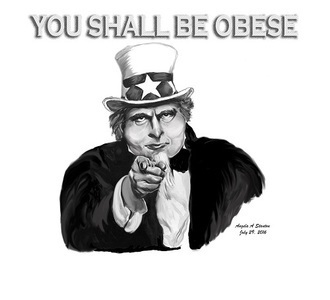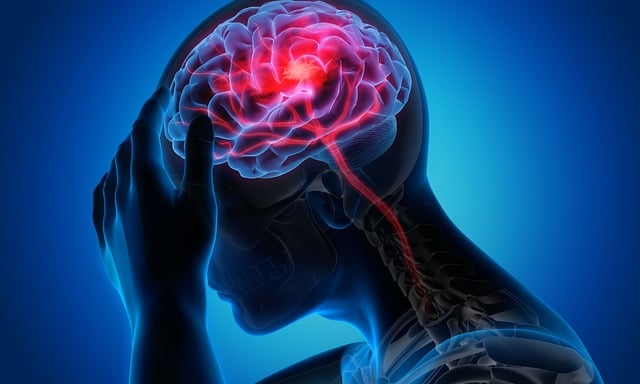Most people love carbohydrates. They taste good and we think because they taste good, they should be good for us. Popeye, the cartoon character from the 20th Century that millions of children grew up watching, was strong and full of energy because of eating spinach. Spinach is a carbohydrate. In later years children’s characters, such as the ones in Sesame Street (sesame is a carbohydrate) like Cookie Monster (a carbohydrate), and many others have also become advertisements for foods. Such cartoons can make a huge impression on children—and to some degree on adults as well.1
There are many questions people fail to ask about carbohydrates. For example, what exactly are carbohydrates? Are the following items all carbohydrates: a bowl of salad, a serving of tofu, a slice of sourdough bread, a bite of watermelon, a piece of 90% dark chocolate, almond butter, soy milk, coconut water, a throat candy, or a vitamin C gummy? If these are all carbohydrates—which they are—is there any difference between them? And if yes, how so, and if not, why not? Do we have to eat any carbohydrates to stay healthy? How does our body use carbohydrates? In this article, I examine carbohydrates and answer these questions.
What is a Carbohydrate?
Carbohydrates are sugars found in nature: glucose, fructose, galactose, sucrose, maltose, starch, lactose, and fiber.
- Glucose is a monosaccharide, a simple sugar that is found in most plant-based foods and is a vital element in some human organs, such as the blood. Glucose easily ferments to alcohol.
- Fructose is a hexose sugar found especially in honey and fruit. Fructose is not a sugar the human body can recognize as sugar. This creates a number of problems. Fructose is easily converted to alcohol by yeast. Fructose is much sweeter tasting than glucose, so sweeter fruits usually have higher fructose content.
- Sucrose is what we call common table sugar. It is a disaccharide, a molecule composed of two monosaccharides: glucose and fructose in equal amounts.
- High fructose (such as corn syrup or honey) is a disaccharide like sucrose, except the percentage of fructose is higher.
- Galactose is a monosaccharide sugar that is about as sweet as glucose.
- Starch is a polysaccharide made up of a large number of glucose molecules.
- Maltose is a sugar produced by the breakdown of starch by, for example, enzymes found in our saliva. It is a disaccharide consisting of two linked glucose units.
- Lactose is a combination molecule of glucose and galactose, which needs lactase enzymes to be broken apart. Those with lactose intolerance are unable to break apart lactose into glucose and galactose, causing gastric distress.
- Fiber is a type of carbohydrate that the body cannot digest. Because fiber isn’t a sugar, it technically isn’t a carbohydrate. Our body cannot use it as fuel. However, since fiber is only available when attached to sugars our body can use, in the USA it was decided to consider fiber a carbohydrate. However, fiber is not considered to be a carbohydrate in all other countries. To get net carbohydrates, fiber is subtracted from the total carbohydrates, even in the USA.
Do We Need Carbohydrates?
The theoretical minimal level of carbohydrate … intake is zero, but [carbohydrate] is a universal fuel for all cells, the cheapest source of dietary energy, and also the source of plant fiber. In addition, the complete absence of dietary [carbohydrate] entails the breakdown of fat to supply energy (glycerol as a glucogneogenic substrate, and ketone bodies as an alternative fuel for the central nervous system (CNS))…2
Although the above quote provides a perfect answer, it is terse, so let me elaborate. There are three macronutrients that we can eat: carbohydrates, fats, and proteins. Of these, fats and proteins are essential, and carbohydrates are not essential. What makes a macronutrient essential is decided based on our body’s ability to make it. For example, while eating an apple provides glucose to the body for energy, that same amount of glucose can be created by our body as well, by converting protein to glucose—via gluconeogenesis. Therefore, if we have no carbohydrates available but we can eat protein, then carbohydrates become redundant (hence non-essential), since the body can make glucose from protein.
However, protein is an essential macronutrient. If we have no protein available to us, only carbohydrates, such as an apple, our body is unable to make protein from that apple. Our body must receive ample protein from our diet in order to synthesize protein for our body. Basically everything we see (skin, hair, nails) and also things we don’t see (blood, 50% of our bones, collagen, hormones, etc.,) are all made of proteins. I wrote about protein previously here. Therefore, protein is an essential macronutrient. Similarly, fat is an essential macronutrient. We must consume some types of fats. Some fat types our body can produce from carbohydrates but not all.
The essential fats we must consume are omega 3 (EPA/DHA) and omega 6 (linoleic) fatty acids. Our body is capable of making some fatty acids from fructose and glucose by the liver but not every kind.
What about fiber? Because fiber falls into the carbohydrates category and carbohydrates are nonessential, it follows that fiber is nonessential. Yet we continuously read/hear about the gut-brain connection, and that assumes that a diverse gut flora is essential, and gut flora lives on fiber. Why is fiber talked about as essential if carbohydrates are not essential?
As you can tell, there is a lot of confusions around nutrition, creating a seemingly intractable dilemma: “what food should we eat?”
Fuel Versus Nutrition
When we talk about carbohydrates, it is important to understand how it relates to nutrition. By this I mean: are carbohydrates fuel for energy or nutrition for growth and development? This is not a trivial question. Most people believe that children need carbohydrates for healthy growth and development. Is this a true assertion though?
The body can use two fuel types: carbohydrates and fats. The body can only use one nutrition type for growth and development: protein. The body can use two nutrition types for structural foundation: protein and fats. I repeat: carbohydrates cannot support growth and development of tissues and organs. It is important to understand that the body cannot even store carbohydrates as carbohydrates for fuel. The reason for this is complex, but in layman terms: glucose is toxic3. It is a highly combustible fuel that may cause major oxidative damage. Carbohydrate oversupply will lead to storing the extra fuel as fat for future energy source. In other words, carbohydrates convert to fat4—triglycerides to be precise. We do not store carbohydrates in our body.
Do We Need Fiber?
There are two main fiber types: soluble and insoluble; there is a third kind, resistant starch, which is mostly man made by manipulating food. Soluble fibers dissolve in water and generate a gel-like texture that is known to reduce the speed with which glucose absorbs, whereas insoluble fibers only generate bulk (here). The conversion of resistant starch by human gut flora yields short chain fatty acids5 which are in the form of butyrate and acetone6, precursors of ketone bodies acetone, acetoacetic acid, and beta-hydroxybutyric acid. Ketone bodies are measurable in blood as β-Hydroxybutyrate, in the breath as acetone, and in the urine as acetoacetic acid, in those who are in ketosis by a metabolic change where ketones are used as fuel instead of glucose. Butyrate, and other short-chain fatty acids generated by gut flora, are not measurable by conventional methods.
The important point about short chain fatty acids generation by gut flora from resistant starch is that when we restrict the consumption of carbohydrates and enter ketosis, the body’s main fuel is ketone bodies. Thus, one need not eat fiber to receive short-chain fatty acids and ketones, and one also receives ketones while in the carbohydrate metabolic process. To learn more about the ketogenic diet, read my article here.
Did you know that even cows that chew grass (cellulose) all day long, end up with short chain fatty acids of butyrate, e.g. ketones7. Are cows seriously on the ketogenic diet? No, they are not in ketosis, however, they are not living off carbohydrates either. They live off of the nutrients created by their flora, such as butyrate. In short: cows live on fats and not carbs, though they eat grass all day—provided they eat grass. Cows fed with grain, such as corn, and wheat, and non-grains such as soy, have very different nutritional content in their meat from grass-fed cows8,9 to the detriment of cattle and human health.
While gut bacteria are believed to be essential for human survival and health, there is a caveat. Humans lack fermenting chambers and only have a single stomach. The opportunity for bacteria to ferment fiber from grains, leafy greens, nuts and seeds, and fruits, would require extensive fermentation ability. Since the only section in the human metabolic process where fermentation is possible is in the short gut, the amount of fermenting is very minimal. For this reason, in humans, the majority of fiber consumed acts only as bulk but not as nutrition. Therefore, the consumption of great quantities of fibrous foods are not to the advantage of the human metabolic process. Fiber provides very large volume but very low nutrition quality.
Eating High Volume and Low Nutrition
Eating more of poor quality but abundant forage to obtain these components generates too much energy, which may be stored in white adipocytes or dissipated by diet-induced thermogenesis. In other words, ‘burning off’’ excess energy can help to correct nutritional imbalances in …barely adequate diets, distilling out scarce nutrients including amino acids, essential fatty acids, vitamins and minerals from energy-rich but nutrient-poor foods…10
The above quote may be a bit complex, so let me elaborate. Eating a lot of food with few nutrients but lots of energy is a problem for the body. A macronutrient that meets this generalization is carbohydrates. As noted earlier, carbohydrates provide fuel and not nutrition. Therefore, in terms of nutrition they are poor quality but in terms of energy, they provide too much. Some of the energy burns off as heat. You may notice this when you eat carbohydrates; you feel hot. This is thermal energy dissipated as a result of getting too much energy for fuel, which cannot be stored. Additionally, since carbohydrates are poor in nutrition, the body has to distill out scarce nutrients with a lot of work. It does this as it converts the excess energy to fatty acids (triglycerides) and stores them for the future.
Micronutrients
There are micronutrients in carbohydrates that we only get in limited amounts from animal food sources, such as vitamin C and magnesium, for example. While both C and magnesium are considered to be essential, they are more essential in a diet full of carbohydrates. This may be counter-intuitive, but the consumption of excess carbohydrates, as a result of low nutrition value, increases glycation processes. Glycation is oxidation, and lots of free radicals are generated, causing damage. Free radicals need to be removed by antioxidants. Vitamin C is an antioxidant. Thus, in a high carbohydrate diet, vitamin C is essential and is “built in” so to speak, very handily, to help reduce free radicals. However, a diet low in carbohydrates has much less need for vitamin C, since glycation, and thereby free radicals, are greatly reduced. Magnesium is found in animal meat as well, and again, similarly to vitamin C, less is sufficient when the diet doesn’t contain carbohydrates.
However, if you are still concerned about vitamin C need, there are animal sources such as: liver, heart, and eggs11-13 with adequate amounts of vitamin C. Although the magnesium amount in meat and dairy is less than in green leafy vegetables, it is provided in sufficient amounts, given the higher absorption rate from animal products than from carbohydrates. Since magnesium management is done by the kidneys, more frequent urination, as a result of carbohydrate consumption, may reduce available magnesium in carbohydrate rich diets 13,14. This would suggest that a diet poor in carbohydrates and rich in meats may need less magnesium.
What Do Carbohydrates Offer?
With all the things I wrote about how carbohydrates are not essential, have low or no important nutrients, what do they have? Is there any reason to eat them? There is no research on what happens to the gut flora in humans when we stop eating plant matter. It is simply assumed that all humans eat plants, and thus, for all humans the gut flora must be able to work with plants. Even if we accept this as a potential point of importance, which in my opinion is highly unlikely, since those not eating an ounce of carbs do just fine with whatever gut flora they have, we still don’t have an answer: what nutrients do carbs offer? There must be some nutrient in plants that would make us want to eat carbohydrates.
In reality there is none. Moreover, carbohydrates are full of antinutrients. Antinutrients are chemicals that block the absorption of beneficial chemicals and/or cause harm themselves. Everything that is alive wants to evade its predators. Some animals can run away and those that cannot get away fast have poisons. Plants also cannot run away and so their tactic is to create chemicals that deter predators from eating them. This deterrence can be subtle, like bitter taste, or hot spice, or can be overwhelming and deadly, such as poisonous mushrooms or something as common as the seeds of apples—eating apple seeds can deliver a lethal dose. The list of poisonous plants is long. Here you find many. While we may not eat most of these poisonous plants or apple seeds, what about eating something more common, such as veggies, nuts, seeds, grains, and fruits sold in grocery stores for our eating pleasure? Do they also contain harmful toxins?
As it turns out, they do. A clever article describes many of them. There are also a couple of amazing documentary films you should watch. Here is one and here is another. In these two films you are introduced to a completely different world of plants, which will help you understand why plants do what they do. So let’s talk about some of the most common plant toxins.
Understanding Antinutrients
The term antinutrients may mean different things to different people. Antinutrients represent chemicals found in plants that supports the growth and survival of the plant itself, but which may cause harm for those eating plants. Since plants want to ensure their own survival, want to reproduce and provide their offspring a chance for survival as well, they have come up with a huge array of chemical protection against predators. These protective chemicals differ based on the part of the plant. Fruits were meant to be consumed because the seeds are propagated by the feces of the animals that consumed them, so it is in the interest of the plants to support those that eat their fruits. However, eating the leaves (such as leafy greens, drinking leaf teas, etc.,), the flowers (such as broccoli, cauliflower, etc.,), the seeds or nuts (such as legumes, almonds, peanuts, etc.,), the young shoots (green onions, asparagus, etc.,), or the roots (potatoes, tubers, onions, etc.,) are off limit as far as the plant is concerned. These parts of the plants are protected by chemicals that either cause harm directly (such as Allyl cyanide in cruciferous veggies such as broccoli, cabbages, cauliflower, and others) or indirectly by blocking nutrients from absorption (such as tannin, for example, which reduces the absorption of metals such as iron and zinc, they also inhibit digestive enzymes, and interfere with proteins. Below is a list of some of the most commonly found antinutrients in the carbohydrates humans eat.
Phytic Acid
Phytic acid is an important storage form of phosphorus and inositol, and is important in building bones, repairing nerves, and as antioxidants. Because of this, there is hardly a person who doesn’t believe that phytates are good and important. They are antioxidants after all, so we need them15… not so fast!
During the past years, attention has been focused on PA [Phytic Acid] as an antinutritional factor in the diet of humans because of their inability to utilize phytate. The low bioavailability of the minerals bound in the PA can lead to deficiencies in human populations where staples like wheat, rice and maize are the major or the only source of nutrition. (from here)
The problem is that phytic acid requires the digestive enzyme phytase to make it bioavailable in the body. While ruminants possess this enzyme and are able to break down phytate, humans (and animals that are not ruminants) lack this enzyme. Because we phytate is not bioavailable for humans, rather than help in nutrient absorption, phytates block it, and are thus, antinutrients. Food sources of phytates include grains, seeds, and nuts.
Goitrogens
As the name implies, this is a compound that attacks the thyroid, causing goiter. Plants that contain this chemical block iodine absorption. Most autoimmune thyroid degeneration is caused by goitrogens. Plants rich in goitrogens are soy, all crucifers—also everyone’s favorites like kale and broccoli.
Oxalates
Oxalates are in many plants and in some in very high amount. Oxalates are corrosive sharp crystals that can cause various problems for humans. Most well-understood are kidney stones, and UTIs16, and lesser understood but more common problems are discussed here. Oxalate rich foods are nuts—particularly almonds—some fruits—particularly mulberries and pomegranates—and many vegetables—particularly rhubarb and spinach. Chocolate is a high-oxalate food!
Tannins
One of the videos I linked to earlier is about tannins. Tannins are a bitter-tasting compound. For example, coffee, tea, dark chocolate, wine, etc., all are high in tannin as their bitter taste lets you know. Tannins interfere with iron and other metals absorption. Tannins are carcinogenic17.
Plant Sterols
Sterols are plant-form of cholesterol. While they have been believed to have lots of health effects because they lower cholesterol, research shows that they are harmful and end up causing heart disease.
EPA/DHA Fatty Acids
Up until this point, I have described all of the things that carbohydrates provide—good or bad. Now let’s look at what they don’t provide, which would be essential.
“More than half of the dry weight of the brain is lipid, a high proportion of which contains long-chain fatty acids derived from dietary essentials. So the metabolic bases of both these features require efficient digestion and internal distribution of dietary and synthesised lipid”18
Our brain is over 60% essential fatty acid in EPA/DHA form19. In plants only the ALA form of omega 3 fatty acid is available. The ALA form is not similar to EPA/DHA and the human body has an extremely low rate of conversion 20. Not eating sufficient EPA/DHA fatty acids can cause brain damage, while increased consumption of DHA is neuroprotective.
Insulin
Among the most important downsides of carbohydrates is their association with insulin release, because carbohydrates convert to glucose, which is toxic to humans. Glucose toxicity leads to insulin resistance 3 (type 2 diabetes) and neurotoxicity21 in humans.
Conclusion
Throughout this paper, I have discussed the negative effects of carbohydrates. I showed absolutely no positives. This is not a bias on my part. I love carbohydrates. We all do. Carbohydrates are addictive; I wrote about that before here. However, at one point we must accept that carbohydrates are not essential. They are harmful if we consume high quantities over the long term. They provide antinutrients, cause harm by providing too much glucose, and lack essential nutrients. We can safely assume that many humans (not all) have evolved to tolerate low quantity, mostly seasonal, carbohydrate intake. However, given the nearly zero amount of nutrients carbohydrates provide, it may be time to reduce our carbohydrate consumption and, instead, fill our tummies with essential nutrients of proteins and fats.
We Need Your Help
More people than ever are reading Hormones Matter, a testament to the need for independent voices in health and medicine. We are not funded and accept limited advertising. Unlike many health sites, we don’t force you to purchase a subscription. We believe health information should be open to all. If you read Hormones Matter, like it, please help support it. Contribute now.
Yes, I would like to support Hormones Matter.
Sources
1 Leonard, B., Campbell, M. C. & Manning, K. C. Kids, Caregivers, and Cartoons: The Impact of Licensed Characters on Food Choices and Consumption. Journal of Public Policy & Marketing 38, 214-231, doi:10.1177/0743915619827919 (2019).
2 Bier, D. M. et al. Report of the IDECG Working Group on lower and upper limits of carbohydrate and fat intake. European Journal of Clinical Nutrition 53, s177-s178, doi:10.1038/sj.ejcn.1600759 (1999).
3 Rossetti, L., Giaccari, A. & DeFronzo, R. A. Glucose Toxicity. Diabetes Care 13, 610-630, doi:10.2337/diacare.13.6.610 (1990).
4 Samuel, V. T. Fructose induced lipogenesis: from sugar to fat to insulin resistance. Trends in Endocrinology & Metabolism 22, 60-65, doi:10.1016/j.tem.2010.10.003 (2011).
5 Cummings, J. H. Cellulose and the human gut. Gut 25, 805-810 (1984).
6 Bourassa, M. W., Alim, I., Bultman, S. J. & Ratan, R. R. Butyrate, neuroepigenetics and the gut microbiome: Can a high fiber diet improve brain health? Neuroscience Letters 625, 56-63, doi:https://doi.org/10.1016/j.neulet.2016.02.009 (2016).
7 Rogers, J. A. & Davis, C. L. Rumen Volatile Fatty Acid Production and Nutrient Utilization in Steers Fed a Diet Supplemented with Sodium Bicarbonate and Monensin<sup>1</sup>. Journal of Dairy Science 65, 944-952, doi:10.3168/jds.S0022-0302(82)82295-9.
8 Li, Y. et al. Ruminal Transcriptomic Analysis of Grass-Fed and Grain-Fed Angus Beef Cattle. PLoS ONE 10, e0116437, doi:10.1371/journal.pone.0116437 (2015).
9 Daley, C. A., Abbott, A., Doyle, P. S., Nader, G. A. & Larson, S. A review of fatty acid profiles and antioxidant content in grass-fed and grain-fed beef. Nutrition Journal 9, 10-10, doi:10.1186/1475-2891-9-10 (2010).
10 CANNON, B. & NEDERGAARD, J. Brown Adipose Tissue: Function and Physiological Significance. Physiological Reviews 84, 277-359, doi:10.1152/physrev.00015.2003 (2004).
11 SEELIG, M. S. The Requirement of Magnesium by the Normal Adult: Summary and Analysis of Published Data. The American Journal of Clinical Nutrition 14, 342-390 (1964).
12 Pennington, J. A. T. Y., B.E.;. Total Diet Study nutritional elements, 1982-1989. Journal of the American Dietetic Association 91, 4 (1991).
13 Seo, J. W. & Park, T. J. Magnesium Metabolism. Electrolytes & Blood Pressure : E & BP 6, 86-95, doi:10.5049/EBP.2008.6.2.86 (2008).
14 Longo, D. L. et al. Harrison’s Manual of Medicine 18th Edition. (McGraw Hill Medical, 2013).
15 Schlemmer, U., Frølich, W., Prieto, R. M. & Grases, F. Phytate in foods and significance for humans: Food sources, intake, processing, bioavailability, protective role and analysis. Molecular Nutrition & Food Research 53, S330-S375, doi:10.1002/mnfr.200900099 (2009).
16 Siener, R., Ebert, D. & Hesse, A. Urinary oxalate excretion in female calcium oxalate stone formers with and without a history of recurrent urinary tract infections. Urological Research 29, 245-248, doi:10.1007/s002400100198 (2001).
17 Chung, K.-T., Wong, T. Y., Wei, C.-I., Huang, Y.-W. & Lin, Y. Tannins and Human Health: A Review. Critical Reviews in Food Science and Nutrition 38, 421-464, doi:10.1080/10408699891274273 (1998).
18 Pond, C. M. in Adipose Tissue Biology (ed Michael E.; Symonds) (Springer Science+Business Media LLC, 2017).
19 Chang, C. K., DS; Chen, JY;. Essential fatty acids and human brain. Acta Neurologica Taiwanica 18, 10 (2009).
20 Gerster, H. Can adults adequately convert alpha-linolenic acid (18:3n-3) to eicosapentaenoic acid (20:5n-3) and docosahexaenoic acid (22:6n-3). International journal for vitamin and nutrition research 68, 14 (1998).
21 Tomlinson, D. R. & Gardiner, N. J. Glucose neurotoxicity. Nat Rev Neurosci 9, 36-45 (2008).












Well written
Thank you John!
Angela
A very good read, and very clear. Thanks for working to clarify that there are no essential carbohydrates!
Glad you enjoyed the article Monique. 🙂 Indeed! There is no such thing as an essential carbohydrate.
Angela
As always, a great article. I wonder, though, how many of the herd will take notice of it, understand it, and/or will follow its recommendations.
You are right Roald. It is perhaps a bit too scientific. We can never control who pays attention and who doesn’t but that will not stop me from trying. 🙂